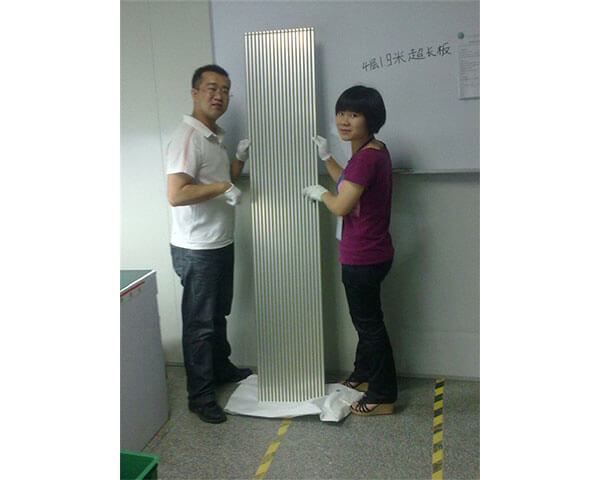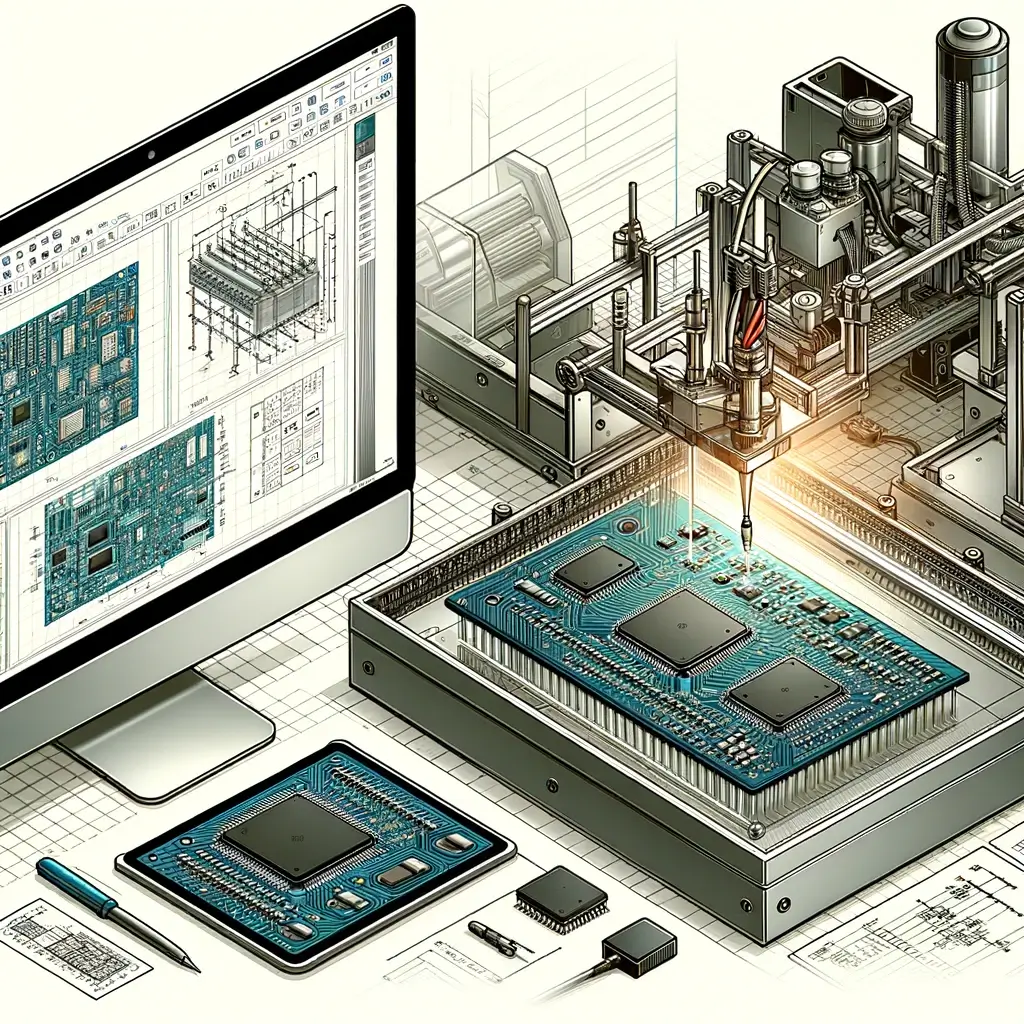PCB Electronics manufacturing is facing both challenges and opportunities in 2017. The need to control costs continues to be a priority for manufacturers, while new technologies enter the landscape providing revenue opportunities but requiring manufacturers to partner with technology solutions providers and other organizations that can supply capabilities outside of the company’s core focus.
The nature of electronics manufacturing trends in 2017 is such that every trend comes with along with challenges. Electronics manufacturers will focus on finding ways to capitalize on current trends while balancing the need to control costs, integrate technologies outside of their primary areas of expertise, and meet customer demands for more efficient, eco-friendly manufacturing processes and electronics. Here’s a look at seven of the biggest trends shaping electronics manufacturing in 2017 as well as the challenges each presents.
1. The demand for smart electronics devices continues to rise.
Smart devices are in demand. Devices like smartphones have been around for years, but look for the same connectivity to become prominent in everything from vehicles to microwaves in 2017. This trend will lead to the development of new partnerships as electronics manufacturers seek technology partners to aid in building in and supporting the connectivity required by smart devices.
“For manufacturers, this opportunity represents tremendous revenue potential,” Ayla Networks explains. “However, the challenge lies in the ability to get secure, scalable connected products into consumer’s hands, when for most manufacturers the connectivity aspect isn’t their core expertise.”
Manufacturers will need to be flexible and adaptable to keep up with constantly evolving electronics demands. According to Infor, an opportunistic mindset in the C-suite is a key advantage. “Manufacturers can take advantage of evolving consumer trends by evolving at the same pace. This means operational changes as well as nurturing an opportunistic mindset among personnel, especially the C-Suite officers,” they explain.
Euromonitor International points out that innovation is the key that prevents a downward spiral in sales across mature product categories such as laptops and televisions, pointing to the need for an innovative, forward-thinking mindset in order to evolve along with always-shifting trends and demands.
2. Pressures mount for green PCB electronics manufacturing.
“Being Green isn’t just for hippies and disaffected Xers any more. As climate change statistics continue to mount, there’s increasing pressure from all areas – consumers, businesses, and governments – to look into more eco-friendly manufacturing solutions. The various carbon cap or carbon trading plans being implemented are also helping to drive this push,” explains RayMing Technology in an article appearing on LinkedIn.
“With major programs being launched to drive research in the field, manufacturing concerns who can get their ISO certifications in place could see a lot of interest, even in countries that aren’t at the low end of the global manufacturing cost scale.”
3. There’s a push for energy-efficient electronics, forcing PWB manufacturers to develop new methods to produce devices that consume less energy.
Environmental concerns are paramount not only during the manufacturing process, but also throughout the lifespan of electronics devices. Reducing energy consumption is an effective way to cut costs, leading both businesses and consumers to opt for energy-efficient electronics. The pressure is on manufacturers to adopt green manufacturing processes while simultaneously producing electronics that are less expensive to use thanks to lower energy demands.
This trend is having a domino effect, contributing to increased demand for related technologies such as global voltage supervisor ICs, according to a report by Technavio analyzing the market for 2017-2024. “This industry research report identifies the increasing demand for energy-efficient devices to be one of the major factors that will have a positive impact on the growth of the power monitor IC market in the coming years,” the report explains. “Increasing power consumption around the globe will induce users to focus on energy conservation by using energy-efficient electronic products. This will consequently drive the demand for voltage supervisor ICs fueling market growth in the coming years.”
4. Medical device technology is a market to watch in 2017.
The field of medicine has always been an early adopter of technology, particularly when it comes to medical devices that improve care delivery or enable patients to manage healthcare needs at home rather than in clinical settings. This is one area in which manufacturing is expected to remain in the U.S., despite other sectors taking advantage of lower manufacturing costs overseas.
“The trend in manufacturing in the US is mostly in high-value-add processes like IC manufacture, medical, or military assembly,” according to an article from Source Research, Inc. “Because these industries inherently need to be close to the manufacture because of the high quality and reliability required for these types of electronic devices, this sector will continue to see growth.”
5. PCB Electronics manufacturing services (EMS) has had steady positive growth, but electronics manufacturing as a whole is expected to have slow growth in early 2017.
Electronics manufacturing overall is expected to experience slow growth in early 2017, according to data published in January 2017 by IPC – Association Connecting Electronics Industries. “Based on three-month rolling averages, printed circuit board (PCB) suppliers growth strengthened but continued negative in November 2016, while the electronics manufacturing services (EMS) industry in North America maintained solid positive growth,” explains the report.
Data available as of November 2016 sent mixed signals, however, with the 3/12 rate of change used for new orders for electronic products in the U.S. having spent the previous nine months in the negative, which IPC explains is an expected outcome from 2015’s growth.
“Another leading indicator, IPC’s PCB book-to-bill ratio, is based on three-month rolling averages of orders and sales, and normally leads PCB sales by three to six months. After three months of positive and strengthening ratios, the ratio fell to 0.99 (below parity) in November 2016, due to weak orders in recent months,” explains IPC. “Ratios below parity (1.00) indicate greater supply than demand, which may be a precursor of slowing or negative sales growth for electronics manufacturers. These indicators suggest the likelihood of slow growth in December and early 2017 with some volatility.”
6. Strategic partnerships will help electronics manufacturers control costs.
In a June 2016 report, PricewaterhouseCoopers (PwC) discusses the evolving technology equipment manufacturing landscape, noting that contract manufacturing is undergoing a shift. As original equipment manufacturers (OEMs) increasingly outsource product design and development to electronics manufacturing services (EMS) partners, they are able to reduce overall costs as well as shift fixed costs to variable costs, a key benefit in the race to control manufacturing costs.
This trend spells opportunity for EMS partners, enabling them to expand into new lines of business and revenue opportunities, and as a result, we’re seeing more strategic partnerships. According to PwC, “Many PCB electronic manufacturing services (EMS) companies are expanding into new services that offer high margin. They are providing new services along the spectrum. At one end, they’re offering more design services, for either sub-assemblies or finished products. At the other end, they’re offering more testing services. The more services EMS providers offer, the more they move into new models of joint design PCB manufacturing (JDM) and outsourced design manufacturing (ODM).”
Strategic partnerships are valuable, but there are several important considerations. Venture Outsourceoutlines several key strategy considerations for EMS and OEMS, including evaluating current customer and product portfolios, aligning strategy and business models, and evaluating value propositions to ensure they’re in line with current needs and strategic business decisions.
7. PCB Electronics manufacturers will place more emphasis on logistics for rapid delivery.
In 2014, EPS made several predictions for the coming years, including the focus on logistics in order to speed delivery. “By 2017, 50% of manufacturers will explore the viability of micro logistics networks to enable the promise of accelerated delivery for select products and customers,” EPS states.
Speed, it seems, will be key in 2017 and beyond. In the same article, EPS predicted that, “By 2018, 75% of manufacturers will be coordinating enterprise-wide planning activities under the umbrella of rapid integrated business planning.” Another related prediction is a 50 percent increase in investments that enable digitally executed manufacturing by the end of 2017, also empowering manufacturers to increase agility.
While EPS made those predictions in 2014, logistics and agility continue to be core focus areas for electronics manufacturers. In a 2015 report, Cerasis made similar predictions for 2016, noting, “Manufacturers will also continue to invest in logistics efficiency to keep up with competitors. This requires a more efficient factory floor space and time to ensure that manufacturers can expedite the delivery of their products.” In addition, Cerasis states, “They will also work to provide updates and fixes to products almost immediately. To accomplish these fixes, companies will rely on customer feedback provided by product sensors and on social media and a sound reverse logistics strategy to handle returns seamlessly.”
These trends will be the key influencers that shape the electronics manufacturing industry in 2017 and beyond. It all comes down to better service and more sophisticated products, delivered at unprecedented speed with accuracy – while at the same time, controlling costs and minimizing environmental impact. It’s an evolving world, and electronics manufacturers that position themselves as agile, flexible solutions providers that can keep pace with rapid change and align themselves with the right strategic partners will be the ones to stand out in the coming year.



